Tired of Chasing the Rainbow? Trout Alternatives in Washington
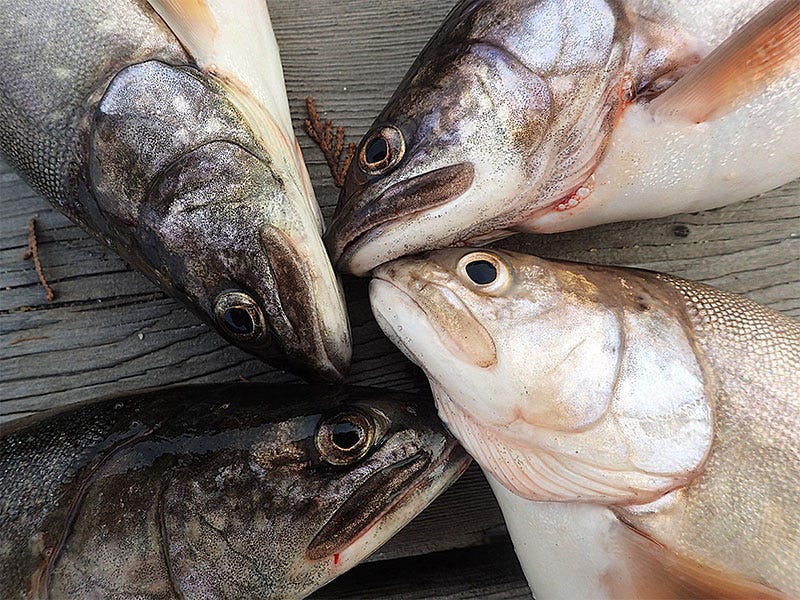
We all learn, when we are little, that a pot of gold lies at the end of any rainbow. Those who do pursue a rainbow’s terminus will only be met with frustration. In many respects, I feel the same way about rainbow trout fisheries in Washington state. Don’t get me wrong, I love catching rainbows and pound for pound you won’t find many harder fighting fish in the state. However, rainbow trout are so widespread in the evergreen state that it's hard to avoid them, frustratingly so. You might think it odd to be frustrated with catching fish, but I’m a person who likes a little variety in his life. After all, you can only chase the pot of gold for so long before it gets boring. Alternative trout fisheries in the state do exist, many are underutilized, and some provide the potential for trophy fish. Here is a rundown of some alternative Washington state trout fisheries worth your time.
Rock Lake – Brown Trout
Located about one hour south of Spokane, this 2000-acre lake is eastern Washington’s largest natural lake. The lake hosts a cornucopia of natural reproducing spiny rays including largemouth and smallmouth bass, yellow perch, and bluegill whose fry form the base of the food chain for a thriving population of brown trout. Every year this lake produces a few browns pushing 10 pounds or more, and fish over 20 inches are not uncommon. Unlike rainbows, which also occupy the lake (of course!), the browns tend to associate more with structure where their prey can also be found. Small crankbaits and Rapalas in patterns imitating perch or trout cast at the bank and worked back to the boat work well here as will a 1/4-ounce jighead with curly tailed grubs jigged around structure too.
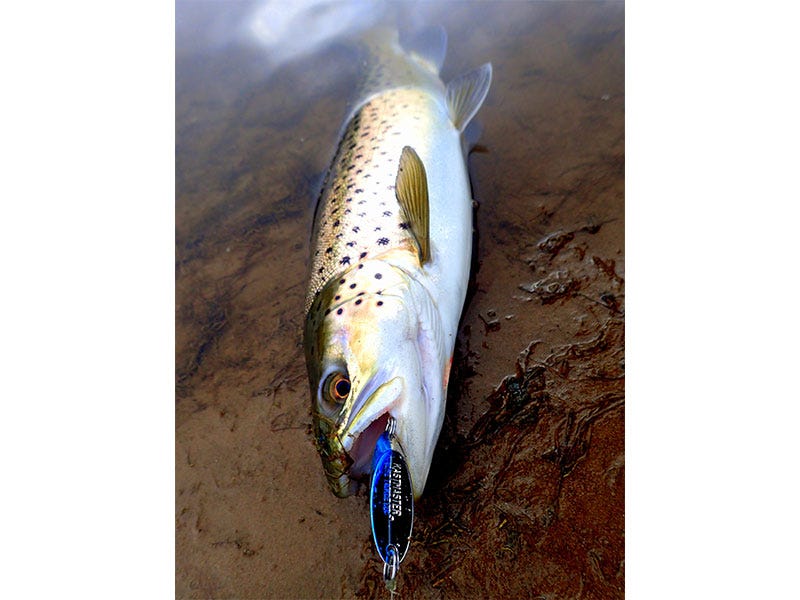
Also, it's not uncommon to catch some decent bass up to three pounds while fishing for browns. Fishermen who are trolling will find fish along weed lines and shelves using size-5 Rapala Shad raps or Yakima Bait Company Mag lip 2.5s with bleeding frogs being a particularly productive pattern. Best fished from a boat, Rock Lake fishes best for brown trout in the spring and fall. However, winter can be very productive too for those willing to brave the frigid air and often windy conditions.
Read our review of how we think Rapala Rips Lips here.
Lake Chelan – Lake Trout (Mackinaw)
Slicing thru the Cascades, Lake Chelan stretches for over 50 miles and reaches depths well over 1,000 feet. This lake is best known for its kokanee fishing and supports a fair cutthroat trout and landlocked chinook salmon fishery. Actually, Lake Chelan is Washington state’s premier lake trout fishery. The state record has been broken here, repeatedly, over the years with the most recent coming in 2013 and weighing over 35 pounds.

Trolling is the name of the game for these fish and downriggers are a must as these fish typically occupy depths of 80 feet to 200 feet deep. Using U-20 or X4 flatfish in frog, or any glow patterns with hooks tipped with bait, trolled at 1.5 to 1.8 mph 15 feet off the bottom are as effective as cut-plug herring behind a 2/0 Les David herring dodger.
Want to know what's on the cutting edge of fishing right now? Read our coverage of ICAST here.
Joe Heinlen of Lake Chelan Adventures, and the undisputed expert on this fishery, recommends keeping your gear tight to the bottom as the macs in this lake primarily feed on mysis shrimp near the bottom. His favorite fishing areas include the “Mack Bar.” The Mack Bar is a one mile long, 120 to 170-foot-deep rise located south of Wapato point that is straight across from the Mill Creek boat launch. Other potential hotspots include; off Milwaukee beach, Manson Bay, and the saddle in front of the Yacht Club.
Lake Bonaparte – Tiger Trout
Nestled in the Okanogan highlands east of Tonasket this scenic 150-acre lake doesn’t show up on most angler’s radar. However, in 2015 a shore angler landed an 18.5-pound tiger trout shattering the previous state record. Since then, large tiger trout over seven pounds have been consistently showing up in catch reports. Bait anglers do well drowning worm or Powerbait on slip sinker rigs. However, tigers will readily smash small crankbaits, plastic minnows, and streamer flies too. Tigers tend to cruise shorelines and, unlike a lot of other trout, will remain active into the dark of night. The lake is also full of a variety of other fish including rainbow, brook, and lake trout, kokanee, and smallmouth bass all of which provide potential food sources for tigers.
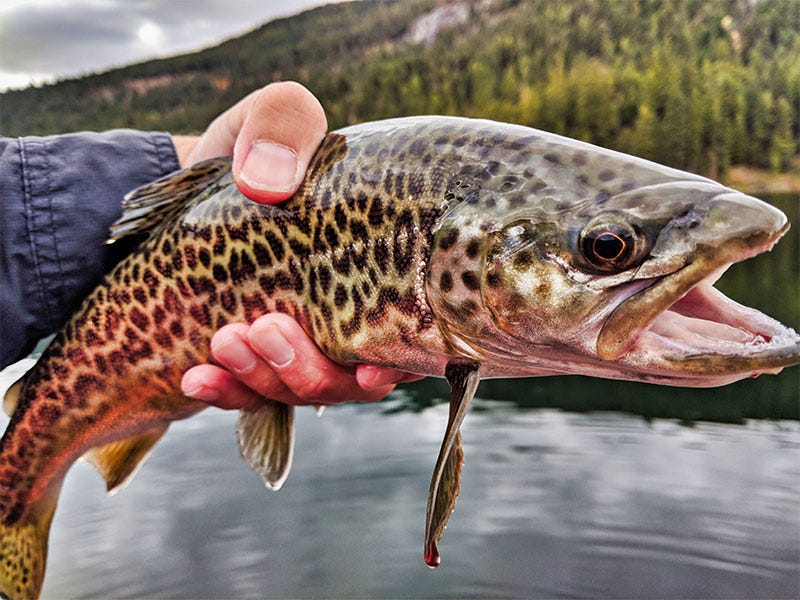
Cowlitz River – Sea-Run Cutthroat Trout
If ever there was an under-utilized fishery, it is the Cowlitz River Sea-Run Cutthroat Trout Fishery. This hatchery supported run sees 80,000 cutthroat trout planted annually. Thousands of these trout return to the Blue Creek Hatchery and average 14 to 16 inches with many fish topping 20 inches. Fishing is best in October and early November around the hatchery itself, but fish can be caught throughout the system as early as June.
Near the hatchery, there is abundant bank access. Otherwise, a drift boat or jet sled will be needed if you plan on fishing it from a boat. Sea-Run cutties are not particularly discerning and will hit a wide variety of tackle including; size-1 spinners or 1/4-ounce spoons, nightcrawlers drifted along the bottom, small jigs under a float, or a variety of flies with a size-6 spruce fly or muddlers being particularly effective.
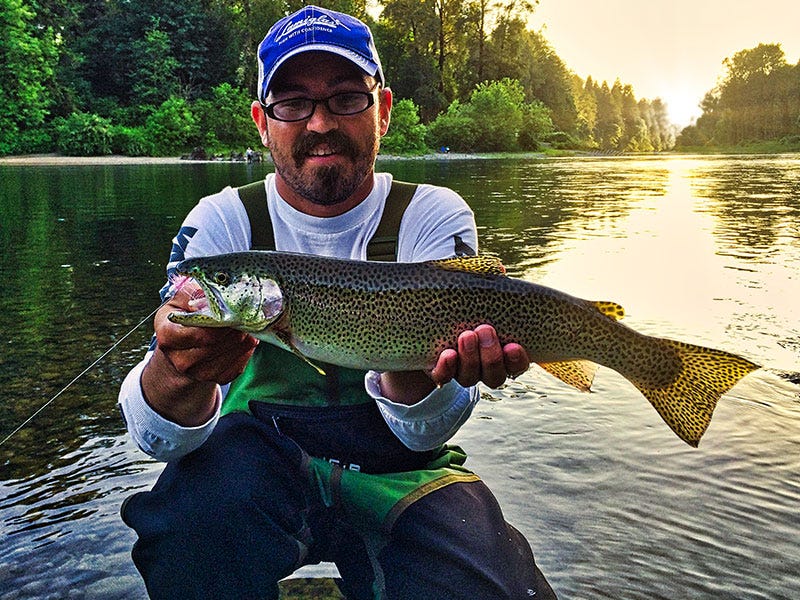
Sea-Run cutties tend to hold tight to the bank or in slower moving water with structure. In October, small schools can be seen running along the shore and can easily be sight cast to with great success. I recommend running at least 8-pound test line as there is always a chance of hooking into a steelhead while targeting these fish and you might as well give yourself a fighting chance.
McGinnis Lake – Brook Trout
Perched on the hills overlooking Chief Joseph Reservoir on the upper Columbia River, is Washington state’s premier brook trout fishery. McGinnis Lake is an unassuming 120-acre lake on the Colville Reservation surrounded by a small housing development and rolling grass-covered hills. Below its surface lurk an abundance of large brook trout averaging 14 to 16 inches with a few fish pushing 20 inches.
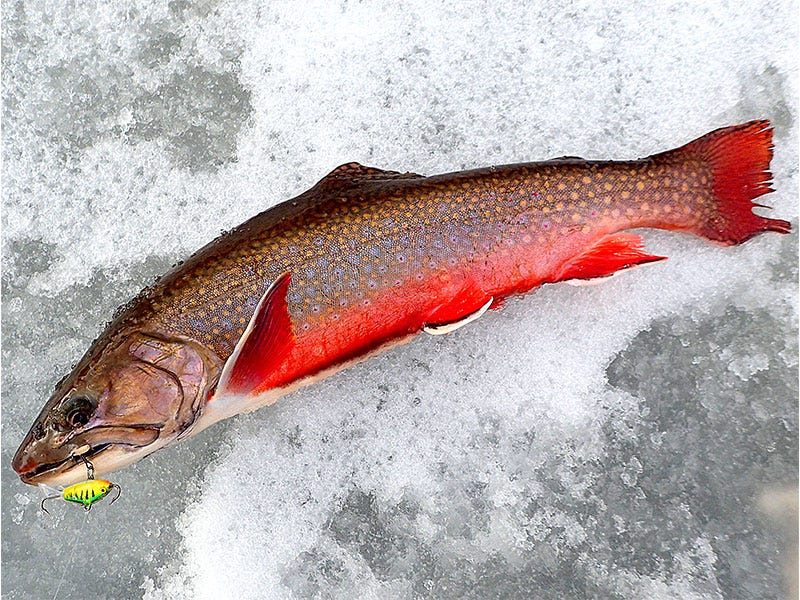
Fishing is best in the transition seasons, but ice fishing can be very productive on this lake in January and February. Fishing here also tends to be best near shorelines with submerged or emergent vegetation. During open water, small spoons or spinners fished along weed lines are productive with copper being particularly effective. Fly fishing with an intermediate sink line and stripping streamers along weed lines can draw vicious strikes. Wooly buggers, balanced leaches, and micky finns are reliable patterns. When ice fishing, focus on locations close to shore and use small jigging raps, tungsten jigs, and spoons tipped with maggots or nightcrawlers.
Omak Lake – Lahontan Cutthroat Trout
If you want to catch a 20-inch trout in Washington state, that isn’t carrying an extra set of chromosomes, this is the place. I’ve seen many anglers catch their largest trout ever in this lake. This is one of only a handful of lakes in the state that supports Lahontan cutthroat trout, a subspecies of trout adapted to alkaline lakes. The best fishing is in the spring and fall and during these times bank and boat anglers can enjoy double-digit fish days with regularity.
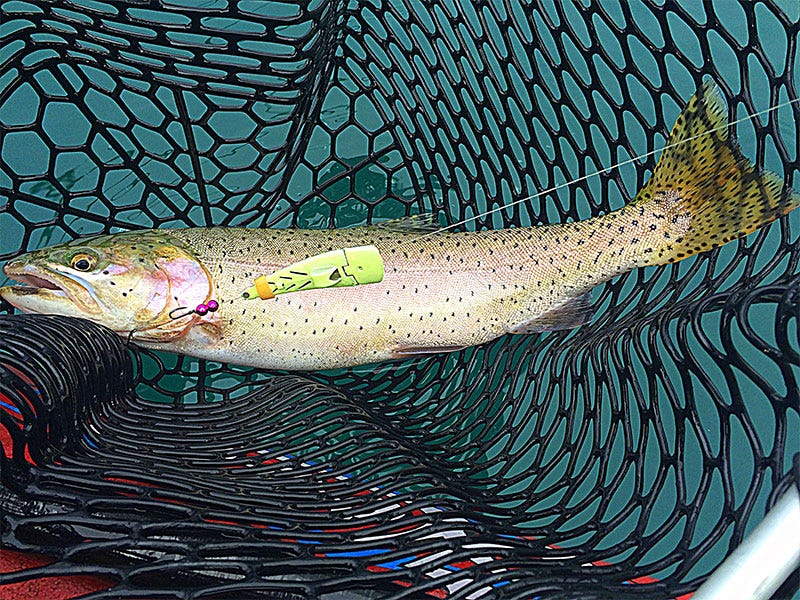
Located on the Colville Reservation, not far from the town of Omak, the lake has multiple launches and access points on the north and south ends of the lake. During summer, fish move away from the shore and go deep. However, during the cooler seasons, fish patrol near shore hunting down chub and shiner fry as well eating aquatic and wind-blown terrestrial insects. Casting 1/4 to 3/8-ounce spinners and spoons from shore can be extremely effective with chartreuse, silver, or blue colors being favored.
Also, this lake has bait and barbed hook restrictions so leave the worms at home. Don’t worry. These super aggressive fish don’t need much convincing to bite. If trolling from a boat, try size-00 herring dodgers trailed by Brad’s mini-cut plugs or wedding rings. On some days, Maglip 2.5s outshine everything when trolled at 2.0 to 2.5 mph along the shoreline.
